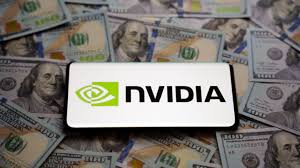Marketing Automation-15 Powerful Ways to Fuel Growth

What is Marketing Automation?
What is Marketing Automation?
Marketing automation is the process of utilizing software to manage repetitive marketing tasks like sending emails, updating social media posts, or monitoring customer interactions. Instead of taking the place of marketers, it enables them—by giving them data, less manual labor, and making customers see the correct message at the correct time.
Automation makes campaigns scalable and measurable, helping businesses stay consistent while tailoring their efforts to each customer’s journey
- What is Marketing Automation?
- Why Marketing Automation Matters Today
- Benefits of Marketing Automation
- Marketing Automation vs. Traditional Marketing
- Core Elements of a Marketing Automation Strategy
- Top Marketing Automation Tools
- How Small Companies Can Leverage Marketing Automation
- Marketing Automation in B2B vs B2C
- Creating a Marketing Automation Funnel
- Email Marketing Automation Made Simple
- Social Media Automation Strategies
- How to Personalize at Scale through Automation
- Marketing Automation Missteps
- The Future of Marketing Automation
- FAQs
- Conclusion
.
Why Marketing Automation Matters Today

With customer expectations at an all-time high, marketing needs to be fast, smart, and relevant. That’s a tall order if you’re doing everything manually.
Marketing automation makes it easier to:
• Stay connected with your audience across all channels
• Respond right away to what your users do online
• Keep every message consistent and true to your brand
• Save time by automating repetitive tasks
• More strategy and creativity—not admin tasks
It’s not simply saving time—it’s being more productive in an extremely competitive digital age.
Benefits of Marketing Automation

The following are the main benefits that companies gain when they adopt automation:
• Time Efficiency: Free your team’s bandwidth and remove manual labor.
• Consistency: Maintain tone, timing, and branding consistency between campaigns.
•Personalization: Send messages that are tailored to each user’s behavior or preferences.
•Scalability: Handle large campaigns with ease without more hands on deck.
•Better ROI: Make smart decisions using performance data to get the most returns.
•Improved Customer Experience: Send messages when it matters most, creating more value for your audience.
Marketing Automation vs. Traditional Marketing

Traditional marketing relies heavily on mass messaging, one-size-fits-all campaigns, and slow processes. It’s reactive, and usually not very personalized.
Marketing automation, on the other hand:
•Takes data to personalize messages for people
•Operates 24/7 with no additional effort
•Monitors user activity and adjusts messaging in response
•Seamlessly integrates with other tools for smooth workflows
The contrast is obvious: automation creates smarter, more intelligent marketing.
Core Elements of a Marketing Automation Strategy
To get marketing automation to do the job for your business, you’ll require these fundamentals:
•Audience Segmentation: Split your contacts into specific groups by behavior or demographics.
• • Audience Segmentation: Divide your contacts into defined segments based on behavior or demographics.
• Automated Workflows: Create sequences that trigger as a consequence of user activity—e.g., welcome messages or follow-ups.
• Automated Workflows: Establish sequences triggered by user activity, such as sending a welcome message or a follow-up due to engagement.
• Lead Scoring: Score based on user activity so you can simply see who your most active prospects are.
•Analytics: Track everything from open rates through conversion performance.
All these pieces build a smarter, more strategic marketing system.

Top Marketing Automation Tools
There are many tools to facilitate automation. These are some of the most popular choices available.
• • HubSpot: For its strong CRM and comprehensive set of automation tools.
• Mailchimp: Best for email automation and marketing management, particularly for smaller companies.
• ActiveCampaign: Provides cutting-edge features to personalize and create intelligent workflows.
• Klaviyo: Best for ecommerce brands that want to automate email and SMS campaigns.
• Marketo: Best-suited for large companies that require sophisticated and scalable automation.
• Drip: Best for consumer-facing brands that want effective growth through targeted automation.
If you’re shopping for tools or just browsing what’s available, you may find this resource useful: Influencer Marketing Hub has guides and dissections of top platforms, as well as current feature comparisons to assist you in determining what will work for you.
Regardless of which tool you choose, the secret sauce is applied when you use it with purpose—streamlining where appropriate, without sacrificing that human element.
How Small Companies Can Leverage Marketing Automation
You don’t require a big budget or big team to use marketing automation. Here are the ways in which smaller firms can begin using marketing automation:
•Automatically send welcome emails to new subscribers.
•Automatically schedule posts on social media to post content at consistent times.
•Install reminders for abandoned cart to recapture lost sales.
•Automatically follow up through sequences of email on leads.
•After purchase, send follow-ups by way of surveys or feedback requests.

With a few workflows, small businesses can establish stronger connections and increase engagement without additional labor.
Marketing Automation in B2B vs B2C

B2B, or Business-to-Business, involves one company providing goods or services to another company.
B2C (Business-to-Consumer) is when a business sells directly to the average consumer.
Here’s how marketing automation unfolds differently in both worlds:
In B2B:
•The sales process typically takes longer, with multiple decision-makers, so automation assists in nurturing leads over time.
•It’s heavier on content—stuff like case studies, whitepapers, and webinars perform well in automated sequences.
•Automation helps sales teams by qualifying leads and providing them with the correct information at the correct stage.
•Because purchases are logic- and need-based, automation is concerned with establishing trust and providing value.
•Emails tend to be targeted, with workflows customized to a company’s particular interests or pain points.
In B2C:
•Purchases are made quickly, frequently on an emotional basis, so automation must be timely and compelling.
•It’s volume-oriented—automated emails, SMS, and push notifications enable businesses to stay in touch at scale.
•Promotions, reminders, and product suggestions are frequently triggered by browsing or purchase history.
•The tone is less formal, more playful, and attention-grabbing.
•Personalization is the key—automated messages are perceived as one-to-one, even when being sent to thousands of customers.
While the strategies vary, marketing automation keeps both B2B and B2C brands organized, responsive, and effective without being overwhelmed by manual labor.
Creating a Marketing Automation Funnel

Here’s how you can build a basic marketing funnel using automation.
•Top of Funnel (Awareness): Leverage content such as blogs, ads, or videos to gain attention and collect leads.
•Middle of Funnel (Consideration): Deliver useful content such as case studies or demos to establish trust.
•Bottom of Funnel (Conversion): Leverage targeted calls-to-action, offers, and emails to seal the deal.
The trick is to create automated workflows that lead users step by step, according to how they interact.
Email Marketing Automation Made Simple

Automating emails can be a game-changer for your customer journey. Here’s how to do it:
•Welcome Series: Make an introduction and provide instant value.
•Drip Campaigns: Send educational or nurturing content at intervals.
•Click, download, or purchase-based triggered emails.
•Win-back campaigns to re-engage inactive customers.
•A/B testing to enhance emails by testing subject lines, content, or timing.
With email marketing automation, you can stay consistently visible and deliver personalized messages right to your audience’s inbox.
Social Media Automation Strategies
Tired of spending hours every day posting manually? This is how automation can save you time and increase performance:
Schedule automatic posting so you’re showing up regularly.
• Plan campaigns in advance with a content calendar to keep yourself organized.
• Create automated monitoring for messages and comments to respond faster.
• Re-share your best evergreen content on a regular basis to get the most out of it.
• Track audience interactions and fine-tune your strategy based on what’s performing well.

If you’re looking to stay ahead of the curve, don’t miss this guide on 2025 Social Media Marketing Trends. It dives into what’s changing, what’s staying, and how automation will continue to play a central role in future strategies.
Social media automation is not merely about ease—it’s about building a stronger, smarter online presence that consistently resonates with your audience.
How to Personalize at Scale through Automation
We all want personalization, yet personalizing individually is next to impossible. With automation, however, it can be achieved.
Here’s the way to do it:
- Use personalized email messages, such as recommendations based on what somebody’s been looking at.
- Make changes to your landing pages based on where visitors landed from or clicked from.
- Deliver timely reminders based on issues like abandoned cart, birthdays, or previous orders.
- Segment your audience by what they are doing in the moment.
When executed correctly, personalization at scale results in greater engagement, more loyalty, and improved results.

Marketing Automation Missteps

As great as automation is, things can go awry. Be mindful of these frequent errors:
•Over-automation: Don’t automate every touchpoint—there’s still a place for humans.
•Disregarding privacy laws: Be compliant with GDPR, CCPA, and so on.
•Lousy segmentation: Sending irrelevant content repels people.
•Not testing: Always test workflows before launch.
•Set-it-and-forget-it: Regularly review and optimize automation.
Use automation to assist, not dominate—keep things real and human-like
The Future of Marketing Automation
That next shift in marketing automation? It’s happening now.Look for:
AI-driven lead scoring that more accurately predicts outcomes than ever before.
•Voice and chatbot technologies integrated for 24/7, hands-free service.
•Faster personalization at the moment of truth, fueled by sophisticated segmentation.
•Automated content creation, from video and email copy to more.
•Omnichannel automation -which means your messages and vibe stay the same, no matter where people see you—online, in-store, or anywhere else.
Keeping up on these trends will help you lead—not follow—the next generation of marketing.

FAQs
1.What is marketing automation in plain English?
It’s using tools to automate repetitive marketing tasks such as emails, social media, and customer follow-ups.
2.Which companies benefit most from marketing automation?
Any business that sells online—especially those with large audiences or multiple touchpoints—can benefit.
3.Is marketing automation expensive?
It isn’t. There are low-cost tools with starter plans that offer plenty of bang for small bucks.
4.Can marketing automation personalize e-mails?
Yes! It can send different content to different users based on what they’ve done or shown interest in.
5.What are some common marketing automation mistakes?
Sending too many e-mails, poor targeting, not testing, and ignoring privacy guidelines.
6.Does marketing automation replace human marketers?
Not at all. With automation taking care of the basics, marketers have more time to think about what truly matters—creativity and strategy.
Conclusion
Marketing automation isn’t about replacing your marketing team—it’s about turbocharging it.Whether you’re emailing more intelligently, automating social media, or tracking user behavior, these tools let you do more, faster, and smarter.
With the right strategy, marketing automation lets you build richer relationships, drive more value, and achieve quantifiable growth. Keep it simple, grow in increments, and put the customer experience first.








1 thought on “Marketing Automation-15 Powerful Ways to Fuel Growth”